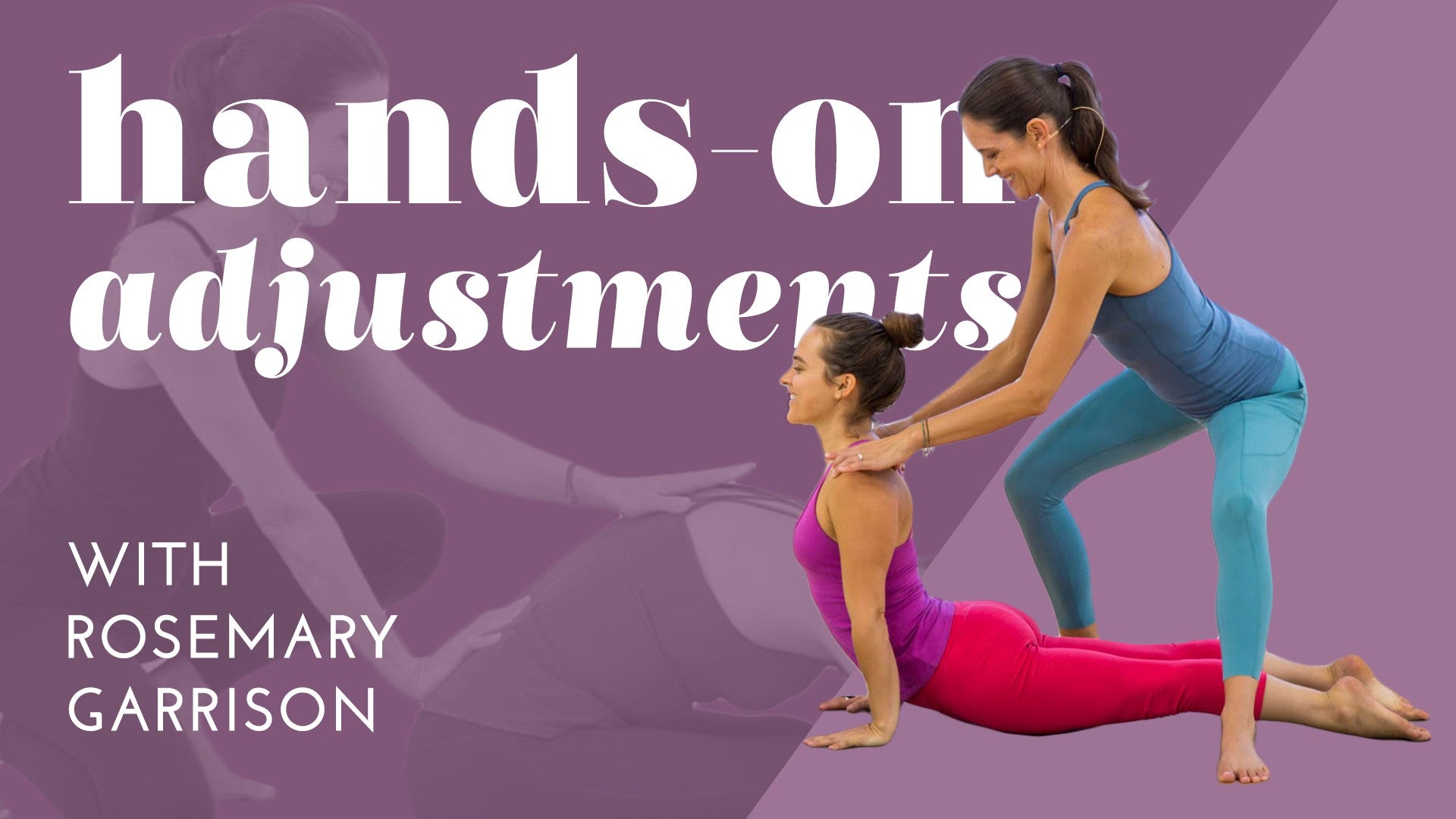Description
About This Video
Transcript
Read Full Transcript
Welcome back. I have Amy here with me, thank you so much, to explore twisting side angle. Alright, as you're ready, as Amy is coming into it, I just want to say there are a lot of similar principles to twisting triangle and a very similar hands-on adjustment. We'll explore that together, okay? Starting as we do with the foundation, her back heel is nice and rooted, solid through the back foot. If that were not the case, you could say root through your back heel, wake up your back leg, right? And then moving to the hips, similar to the pyramid adjustment, I'm bracing my leg outside of her hip, left hand to outer left hip, right hand to her right hip, and then drawing my left hand back, my right hand slightly down while verbally cueing, draw your outer left hip up and back and drop your right hip down, okay? Stabilizing the sacrum as I transition to her upper body, we can see that Amy's shoulders are down her back, her torso is rolling open, and we're just going to expand that a little bit. So I'm bracing her outer hip with my left leg, I'm taking my left hand to her outer left hip and my right hand to her shoulder, and then I'm drawing back with my left hand and rolling open with my right, yes, to deepen her twist. Then a little bonus, my right hand comes to her right rib cage, gently pressing forward and down, and my left hand comes to her left rib cage just a little deeper into that spiral, nice. Keep the stabilization, left hand to the sacrum as I release the right, and ground her as I move my body weight away from her, and then release my hand, nice, Amy, come out of it as you're ready. Take your time, right. So with all of these variations that involve stabilizing your student, you want to play with that, finding the sweet spot so you don't push them forward or pull them back, experiment with that, get feedback from your students, from your friends. Thank you so much, and namaste.







You need to be a subscriber to post a comment.
Please Log In or Create an Account to start your free trial.